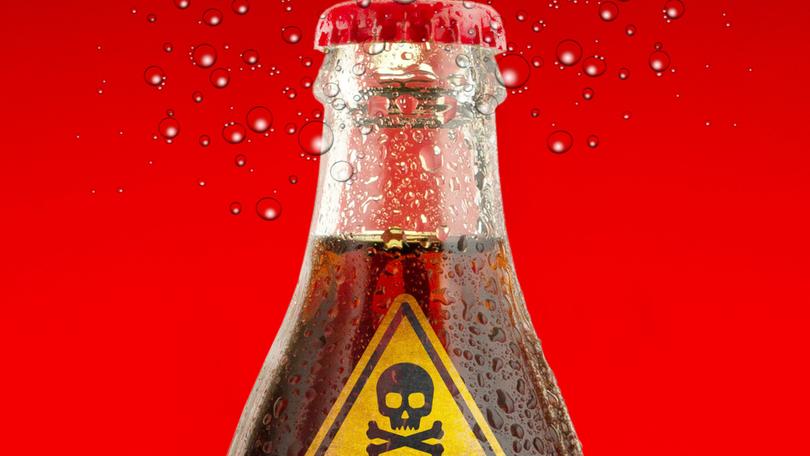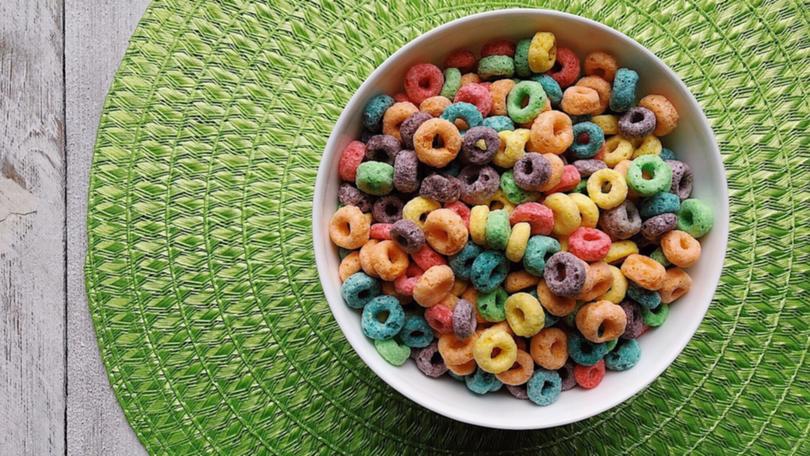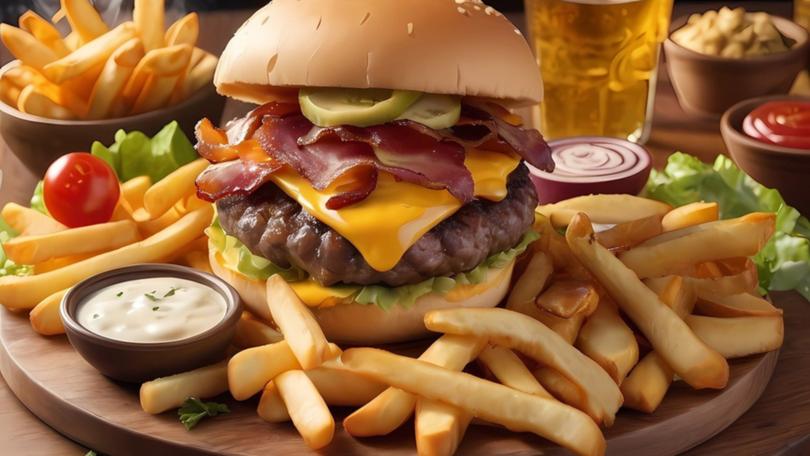THE ECONOMIST: Could ultra-processed foods be poisoning our bodies? Scientists learning now why they’re bad

For millennia, people have altered food to please their palates.
More than 3000 years ago Mesoamericans, living in what is Mexico and Central America today, cooked corn kernels in a solution of wood ash or limestone.
The process, known as nixtamalisation, unlocked nutrients and softened the tough outer shells of the corn, making them easier to grind.
Sign up to The Nightly's newsletters.
Get the first look at the digital newspaper, curated daily stories and breaking headlines delivered to your inbox.
By continuing you agree to our Terms and Privacy Policy.With the invention of canned goods and pasteurisation in the 19th century, food alchemy became possible on an industrial scale.
Processing innovations made food cheaper, more convenient and plentiful.
According to the UN, the average daily food supply available for a person in the rich world increased by over 20 per cent between 1961 and 2021, to 3500 kilocalories.
In that time, obesity rates have more than tripled; today, nearly one in three people globally is obese or overweight.
Now concerns are growing that the heavy processing used to cook up cheap, tasty nibbles may itself be harmful.
A particular target is “ultra-processed foods” (UPFs), a relatively recent label put forward by Carlos Monteiro, a Brazilian scientist.
Robert F. Kennedy junior, Donald Trump’s nominee for secretary of health, has likened processed food to “poison” and promised to reduce the share of UPFs in American diets.
In November 2023, Colombia imposed a tax on highly processed foods and drinks.
Authorities in Brazil, Canada and Peru have advised the public to limit consumption of these foods. In Britain parliamentarians are investigating the effects of UPFs on people’s health.
At the heart of the debate is a question: are UPFs unhealthy because their nutritional content is poor, or does the processing somehow pose risks in itself?
New research may soon provide answers that could reformulate what people eat.
At the turn of the 21st century Dr Monteiro noticed that people in Brazil were buying less sugar and oil than in the past.
Yet rates of obesity and metabolic diseases were still rising.
This coincided with the growing popularity of packaged snacks and ready-made meals, which were loaded with sugar, fats and other additives.
In 2009 Dr Monteiro came up with a classification system, called Nova, that sorts foods into four buckets depending on the degree of processing they undergo.
The first group includes minimally processed foods like fruit and milk. The second covers basic ingredients like butter and sugar. Next are foods like canned vegetables, bread, and cold cuts.

The last group, UPFs, represent heavily processed items like fizzy drinks, sugary cereals and frozen pizzas. These are made with ingredients not typically found in a home kitchen, such as hydrogenated oils, high-fructose corn syrup, flavouring agents and emulsifiers.
UPFs are made industrially by breaking down whole foods into components like sugars, proteins, starches, and fibre.
These are chemically modified and reassembled along with additives like artificial colours and sweeteners to make the food more appealing.
Since the 1990s the share of UPFs in diets worldwide has grown; they now account for more than half of the calorie intake in America and Britain.
And for several decades, evidence has also been building that these foods are harmful in some way.
Numerous studies show that people who consume diets high in UPFs tend to have more health problems, including obesity, type-2 diabetes, cardiovascular disease, various cancers and mental-health problems.
UPFs often contain higher concentrations of fat, sugar and salt than processed foods, which could explain their negative effects.
But a recent analysis by Samuel Dicken and Rachel Batterham at University College London reviewed 37 studies and found that even after adjusting for fat, sugar and salt UPFs were still strongly linked to poor health.
That suggests there is more to their harm than just a poor nutrient profile.
Where those harms come from is still unclear, however.
With so many competing factors that could also explain poor health — such as income, education and social conditions — observational studies alone cannot offer conclusive answers.
Arne Astrup, a researcher at the Novo Nordisk Foundation in Denmark, argues that most of the studies that make statistical adjustments to try to isolate the effects of processing are “not good enough”.
A better way to assess the question is with a randomised controlled trial (RCT), where researchers track a person’s food intake and control for all other variables.

In one of the few such trials, published in 2019, Kevin Hall, a researcher at the National Institutes of Health (NIH) in America, admitted 20 adults to the NIH Clinical Centre for four weeks.
The participants received either ultra-processed or minimally processed foods for two weeks before swapping diet for the next fortnight.
Participants in both diets had access to the same amount of calories and nutrients like sugars, fibre and fat.
People were free to eat as much or as little as they wanted.
The results were striking.
People on the ultra-processed diet ate about 500 more calories per day than those on the unprocessed one.
They also ate faster and gained an average of 1kg over two weeks.
On the other diet, participants lost a similar amount of weight.
Dr Hall says that, though the study was short and conducted in an artificial setting, the results suggest that excess amounts of salt, sugar and fats might not be fully to blame for the ill effects of processed food.
Further RCTs will be needed to confirm Dr Hall’s results.
Even then, a bigger question remains — why do people overeat UPFs?
Dr Hall has some ideas.
One is that highly processed foods pack more calories per bite.
When creating them, manufacturers often remove water to dry the food, to improve their shelf life.
But this also makes foods more energy dense.
Another theory — as anyone who has tried, and failed, to eat just one crisp from a bag can attest — is that highly processed foods are also engineered to be irresistible.
UPFs often contain combinations of nutrients — higher in either fat and sugar or fat and salt, or carbohydrates and salt — known as “hyper-palatable” mixes.
These combinations do not appear in nature and tend to encourage people to eat more quickly, not giving the gut enough time to tell the brain that it is full.
To test these ideas Dr Hall is running another study where 36 people check into his diet hotel for a month.
They will be rotated through four different diets: two similar to those in his previous study and two new ultra-processed regimes.
One of these is low in both energy density and hyper-palatable foods, while the other is high in energy density but low in hyper-palatable combinations.
As before, all diets are balanced for key nutrients and Dr Hall is tracking changes in the participants’ weight and other health measures.
Though the full results of the study are not expected until next year, early findings suggest that both hyper-palatability and energy density seem to cause most of the excess calorie consumption of UPFs.
Dr Hall is hopeful that his study will help to move the conversation on UPFs from opinion to science.
The extent of reformulations of food that might be needed, meanwhile, is uncertain.
If the harms are found to be focused on just a few ingredients or processing methods, foodmakers could easily adapt.
However, says Dr Hall, if it turns out to be a “combinatorial nightmare” of many ingredients or processes that cause harm only in certain combinations, solving the problems of UPFs will become much more challenging.
Mapping the territory, though, is the first step.
Even if the results show conclusively that processing, and not just nutrients, leads to poor health, policymakers will face another difficulty: the definition of UPFs remains woolly.
The Nova classification has no tolerance at all for artificial ingredients.
The mere presence of a chemical additive classifies a food as a UPF, regardless of the amount.
This can lead to confusing health outcomes — a recent observational study from Harvard University, for example, found that whereas some UPFs, such as sweetened drinks and processed meats, were associated with a higher risk of heart disease, others, like breakfast cereals, bread and yogurt, were instead linked to lower risks for cardiovascular disease.
Dr Astrup warns that the current classification risks “demonising” a lot of healthy food.
Insights from Dr Hall’s work could therefore help refine the understanding of UPFs, paving the way for more balanced and useful guidelines.
Originally published as Scientists are learning why ultra-processed foods are bad for you
